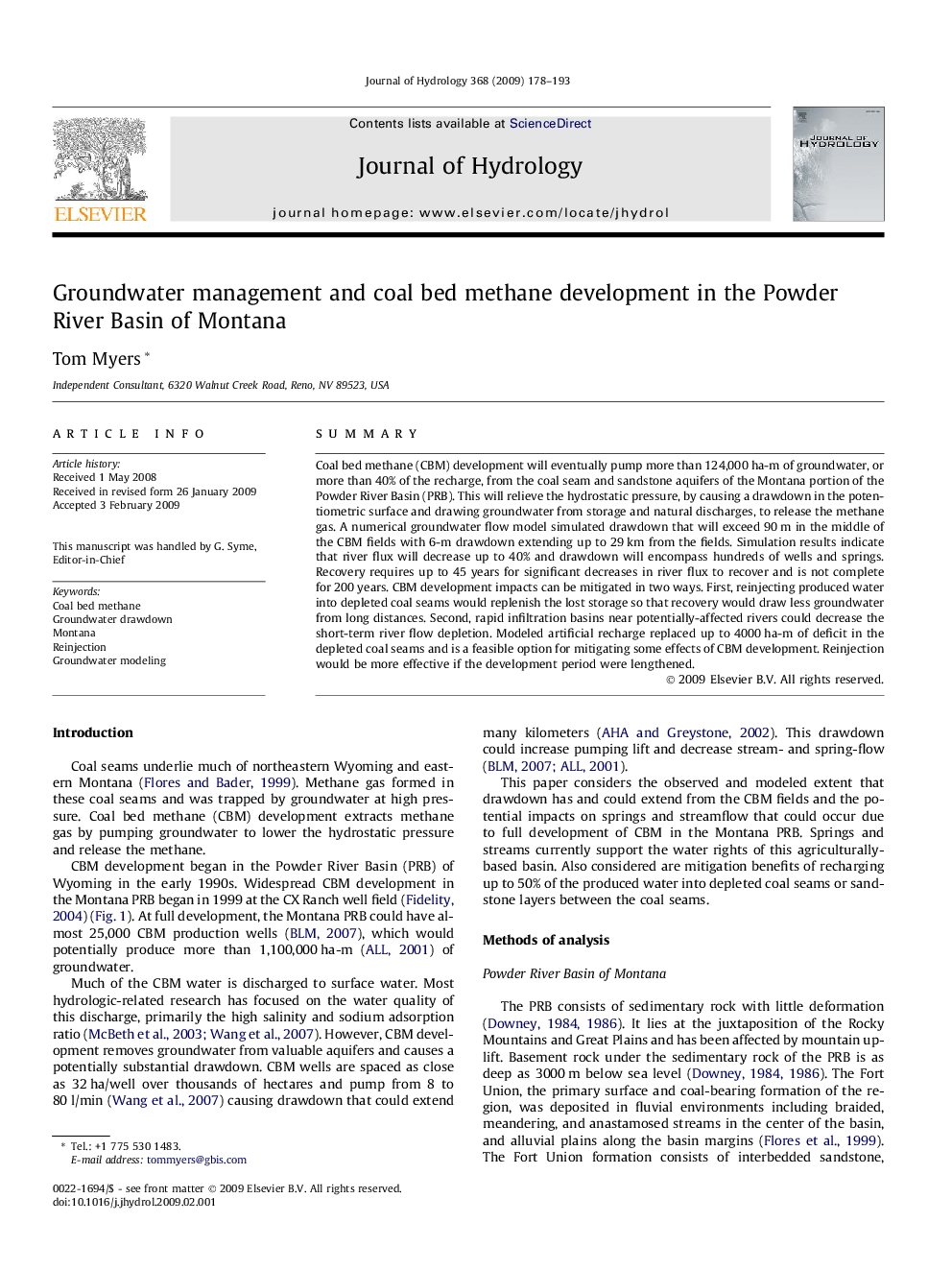| Article ID | Journal | Published Year | Pages | File Type |
|---|---|---|---|---|
| 4579037 | Journal of Hydrology | 2009 | 16 Pages |
SummaryCoal bed methane (CBM) development will eventually pump more than 124,000 ha-m of groundwater, or more than 40% of the recharge, from the coal seam and sandstone aquifers of the Montana portion of the Powder River Basin (PRB). This will relieve the hydrostatic pressure, by causing a drawdown in the potentiometric surface and drawing groundwater from storage and natural discharges, to release the methane gas. A numerical groundwater flow model simulated drawdown that will exceed 90 m in the middle of the CBM fields with 6-m drawdown extending up to 29 km from the fields. Simulation results indicate that river flux will decrease up to 40% and drawdown will encompass hundreds of wells and springs. Recovery requires up to 45 years for significant decreases in river flux to recover and is not complete for 200 years. CBM development impacts can be mitigated in two ways. First, reinjecting produced water into depleted coal seams would replenish the lost storage so that recovery would draw less groundwater from long distances. Second, rapid infiltration basins near potentially-affected rivers could decrease the short-term river flow depletion. Modeled artificial recharge replaced up to 4000 ha-m of deficit in the depleted coal seams and is a feasible option for mitigating some effects of CBM development. Reinjection would be more effective if the development period were lengthened.
